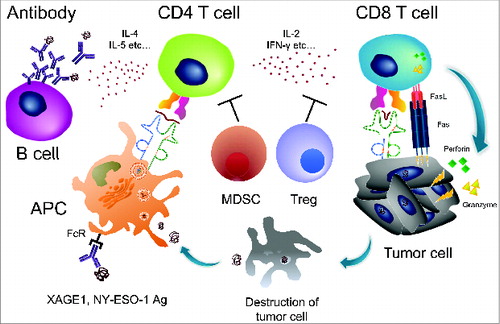Figures & data
Figure 1. Spontaneous immune responses to tumors in cancer patients. The cancer/testis (CT) antigens NY-ESO-1 and XAGE1 (GAGED2a) are strongly immunogenic, and an integrated immune response, consisting of an antibody response and CD4 and CD8 T-cell responses is frequently elicited spontaneously. The antibody response is a useful biomarker of immune responses because of its sensitivity and reproducibility, as well as involving a simple assay procedure. CD4 T-cell responses to CT antigens would be enhanced by the antigen-presenting cells (APC) that efficiently internalize the antigen/antibody complex via the Fc receptor (FcR) and promote the antibody response via IL-4 and IL-5 cytokines, and the CD8 T-cell response via IL-2 and IFNγ. CD8 T cells lyse tumor cells via Fas-FasL, perforin, and/or granzyme. Tregs and MDSCs suppress CD4 and CD8 T cells.

